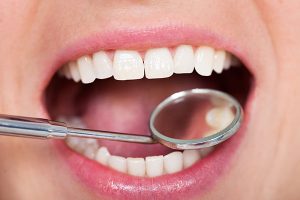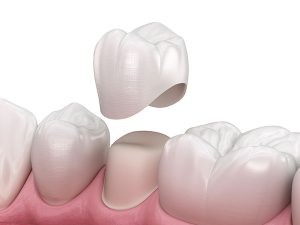Inlays and Onlays vs. Dental Crowns: Which is Right for You?
Restoring Your Smile, One Tooth at a Time
Damaged teeth can be a pain, literally and figuratively. Chewing, speaking, and even smiling can become uncomfortable or embarrassing. But don’t worry, modern dentistry offers several solutions to restore your chompers to their former glory. Two popular options are inlays/onlays and dental crowns. But which one is right for you?
At Luck Dental Clinic, our dental team in Luck, WI, led by Dr. Morgan Clemenson can help you decide which dental restoration best meets your needs. Learn more by dialing (715) 472-2211.
Understanding Inlays and Onlays

The Advantages of Inlays and Onlays
- Preserve More Tooth Structure: Unlike crowns, which require removing a significant portion of the tooth, inlays and onlays only target the damaged area. This helps maintain the tooth’s strength and health.
- Natural Appearance: Made from tooth-colored materials, inlays and onlays blend beautifully with your surrounding teeth, creating a natural-looking restoration.
- Strong and Durable: These fillings are built to withstand years of wear and tear.
Dental Crowns: When Might They Be Needed?
Crowns are tooth-shaped caps that completely encase the entire tooth. They’re generally recommended for:
- Severely Damaged Teeth: If the damage is extensive, a crown is needed to provide sufficient support and prevent further breakage.
- Large Cavities: When a large cavity weakens the tooth structure, a crown is necessary to restore strength and functionality.
- Root Canal Treatments: Following a root canal, a crown is often placed to protect the weakened tooth.
- Cosmetic Concerns: Crowns can address cosmetic issues like discoloration, cracks, or misshapen teeth.
Benefits of Dental Crowns
Some advantages of dental crowns include:
- Strength and Durability: Crowns are tough and long-lasting, typically lasting five to 15 years with proper care. This makes them a wise investment for protecting and restoring damaged teeth.
- Complete Restoration: For severely damaged or cracked teeth, crowns provide complete encasement, offering superior protection and preventing further breakage.
- Improved Functionality: Chipped, cracked, or broken teeth can make chewing difficult. Crowns restore the tooth’s shape and structure, allowing for normal chewing function.
Crowns vs. Inlays and Onlays: A Side-by-Side Comparison

- Coverage: Crowns completely encase the entire tooth structure above the gum line, offering maximum support and protection. Inlays and onlays, on the other hand, are more conservative restorations. They only cover a portion of the tooth, typically the cusps (points) or the area between the cusps.
- Suitability: Crowns are the go-to option for severely damaged, cracked, or fractured teeth. They’re also recommended for large cavities, teeth that have undergone root canal procedures, and for purely cosmetic reasons to address discoloration, misshapen teeth, or gaps in the smile. Inlays and onlays are ideal for moderately damaged teeth, fractured cusps, or situations where a large filling is needed but significant tooth structure remains.
- Tooth Preservation: Since crowns require grinding down a substantial portion of the healthy tooth structure to fit the cap, less tooth structure is preserved compared to inlays and onlays. These more conservative restorations target only the damaged area, maximizing the amount of natural tooth structure that remains.
- Procedure: Placing a crown usually involves multiple appointments. Inlays and onlays may also require two appointments depending on the complexity, but the process is generally less involved than crowns.
- Cost: Due to the extensive coverage and procedure, crowns are generally more expensive than inlays and onlays. These more conservative restorations may be slightly less costly.
So, Which One Should You Choose?
The decision between an inlay/onlay and a crown depends on the severity of the tooth damage. If the damage is moderate and affects only a portion of the tooth, an inlay or onlay may be the ideal solution. However, for severely damaged or cracked teeth, a tooth crown is likely the most suitable choice to ensure long-term stability and function.
Consulting a Dental Professional
If you have a damaged tooth, scheduling an appointment with your dentist is crucial. They will assess the extent of the damage and recommend the most appropriate restoration option for your needs.
With proper care and treatment, you can restore your healthy, beautiful smile! Call (715) 472-2211 to schedule a consultation with Dr. Clemenson at our Luck, WI, office today!
